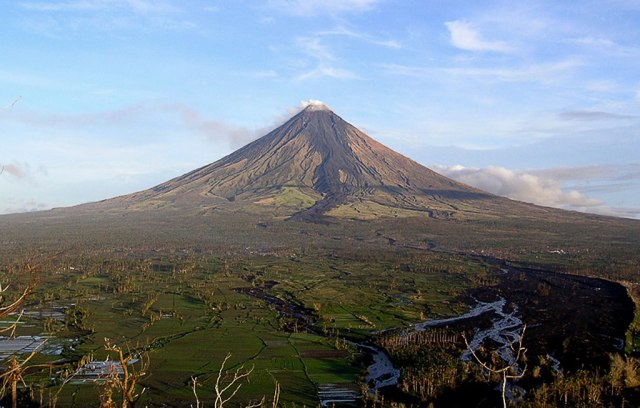Mayon Volcano, also known as Mount Mayon or simply Mayon, is an active volcano in the province of Albay, on the large island of Luzon in the Philippines. A popular tourist spot, it is renowned for its "perfect cone" because of its symmetric conical shape.
The volcano with its surrounding landscape was declared a national park on July 20, 1938, the first in the nation. It was reclassified as a Natural Park and renamed as the Mayon Volcano Natural Park in 2000. It is the centerpiece of the Albay Biosphere Reserve, declared by UNESCO in 2016, and is currently being nominated as a World Heritage Site. It is the most active volcano in the Philippines.
The concave profile of the volcano is due to the balance between erosion and eruption, defined by the angle of repose of ash. The steepest upper slopes of the volcano reach an average slope gradient of 75%, while the lower foot slope is only an average of 3%.
The volcanic crater is about 250 m in diameter. At least 85 lava flows have been identified from it. The farthest flow reached 8.5 km along Fidel Surtida, Santo Domingo.
Like other volcanoes around the Pacific Ocean, Mayon is a part of the Pacific Ring of Fire. It is on the southeast side of Luzon. The Bicol Arc is one of 7 oceanic zones defining the Philippine Mobile Belt.

